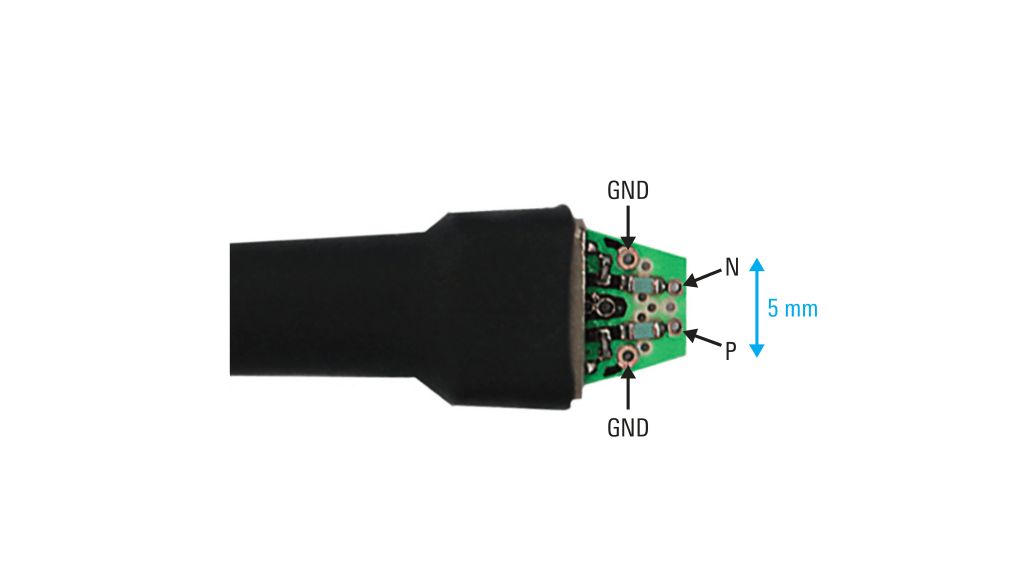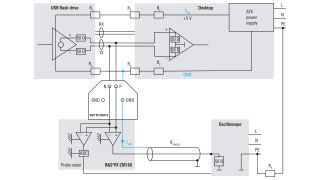RE stands for the resistive load of the protective earth (< 10 mΩ). Rshield is the shield resistance of the probe cable (about 30 mΩ). RT is the host trace resistance (max. 167 mΩ) and RC is the mated connector resistance (max. 30 mΩ). Both RT and RC are stipulated in the USB 3.2 specification chapter 11.4.2 (see table below). RT, RC together with RE and Rshield form a current divider for the ground current in the USB flash drive when the blue-marked ground connection in the probe tip is connected. In the following, the influence of the network is estimated and implementation is assumed to have a third of the maximum value for the RT and RC specs. This means the values are roughly those of RE or Rshield resistors.
Significant DC current is marked as IVDD and flows over the probe coaxial shield. Assuming 500 mA supply current is extracted from the USB driver data, the current through the probe and oscilloscope is estimated at 300 mA, resulting in an IR drop of 9 mV along the probe cable shield.
Since the amplifier in the probe tip is referenced to the local ground and the oscilloscope input to the common ground, the difference in potential between the tip and chassis is 9 mV. This may seem slight, but the probe attenuates at 10:1 or 2:1 depending on the vertical scale. Here, the software multiplies all voltages from the input ports with a connected probe using the reciprocal attenuation and the 9 mV difference becomes 90 mV with 10:1 attenuation.
This effect is apparent in the differential signal, since the signal is converted from a differential to single ended signal in the probe tip amplifier, with the local, probe ground reference and the 9 mV potential shift added later.
Another side effect comes from the analog-digital converter (ADC) in the oscilloscope signal path being referenced to the common ground, whereas the ADC in the probe meter is referenced to the local DUT ground, creating the observed difference in common mode voltage (6 mV versus 137 mV).















